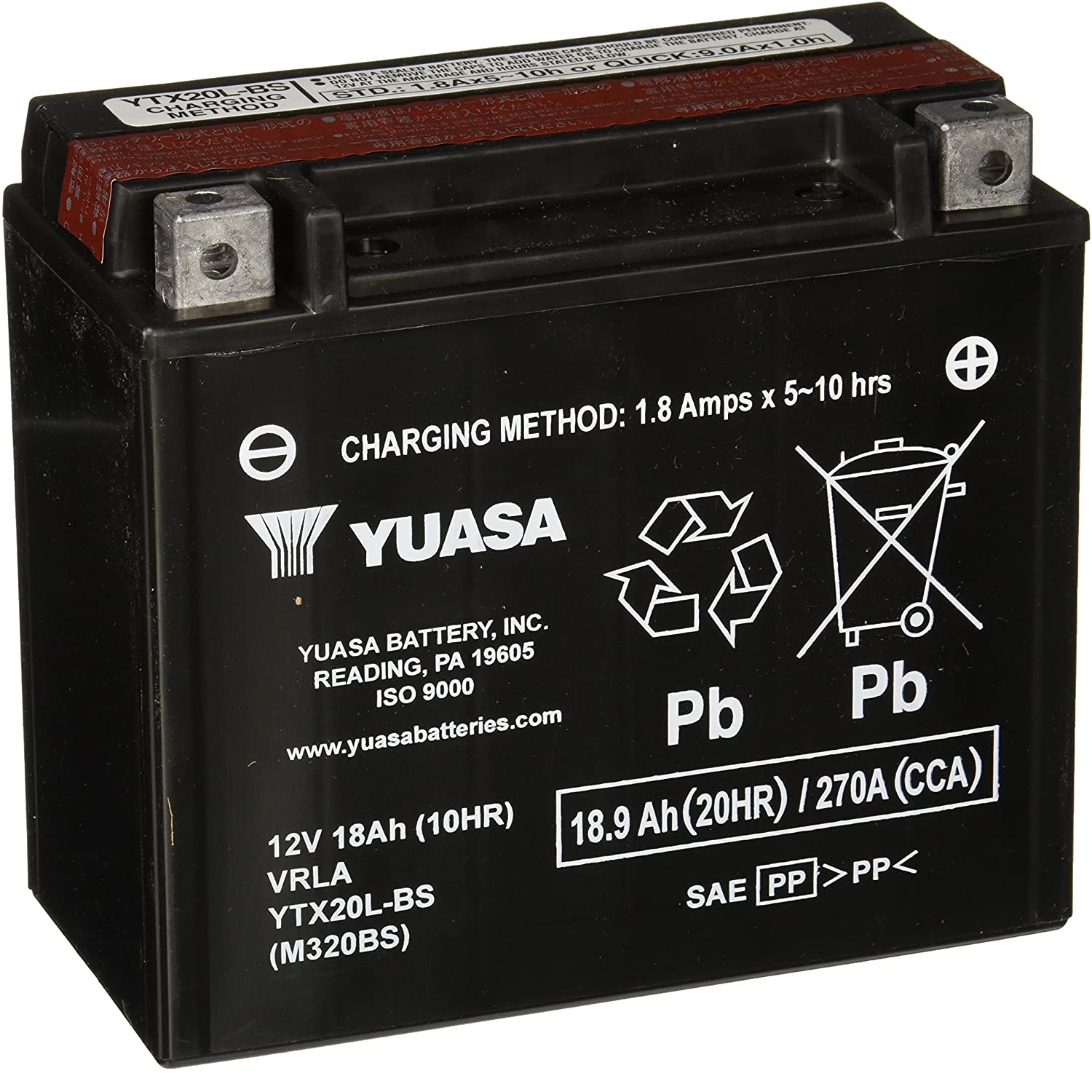
- Brand Yuasa
- Voltage 12 Volts
- Item Weight 14.85 Pounds
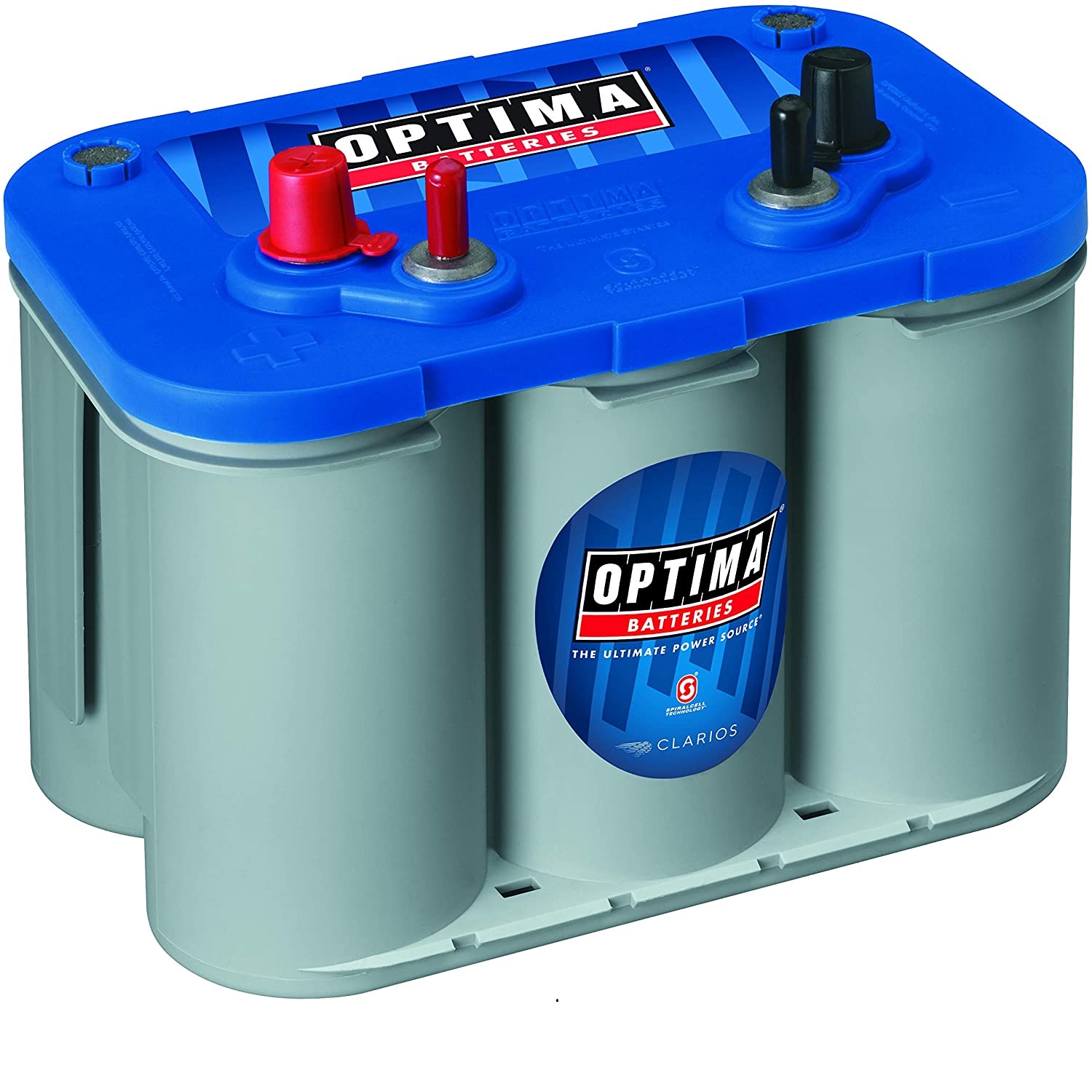
- Brand Optima
- Voltage 12 Volts
- Item Weight 43.5 Pounds
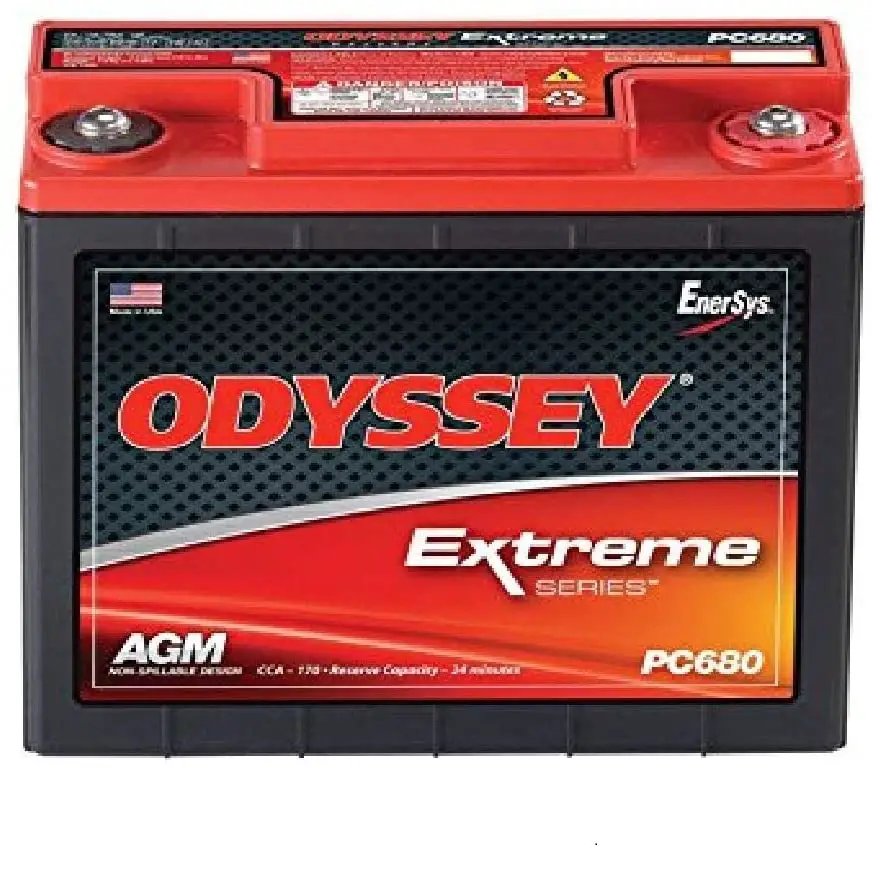
- Brand ODYSSEY
- Voltage 12 Volts
- Item Weight 13.45 Pounds
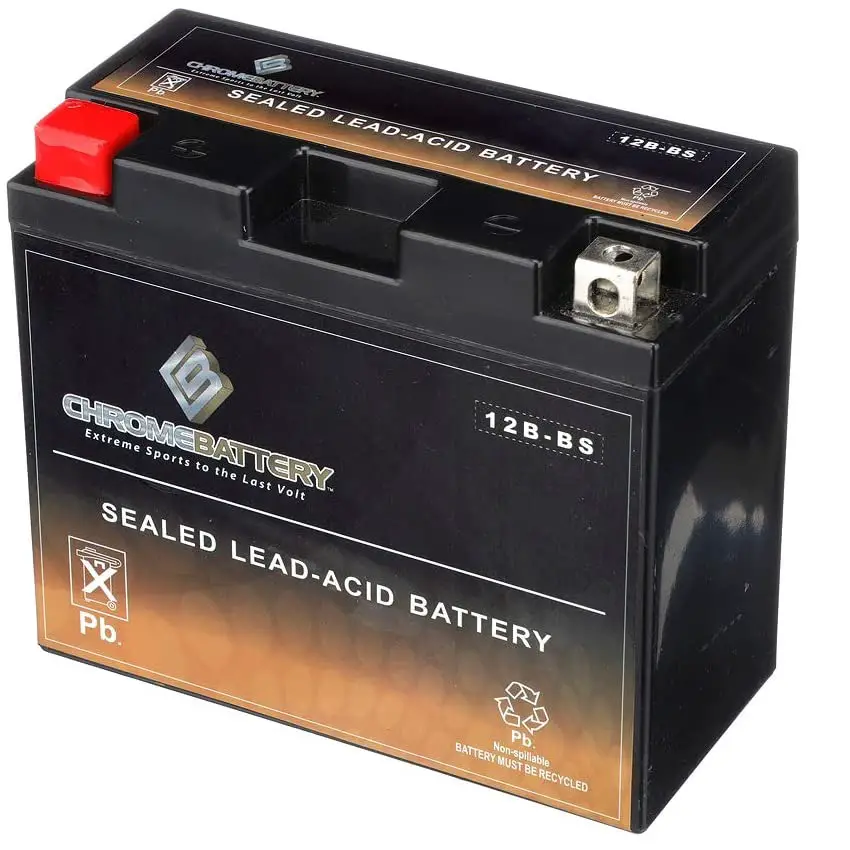
- Brand CB Chrome Battery
- Voltage 12 Volts
- Nut & Bolt
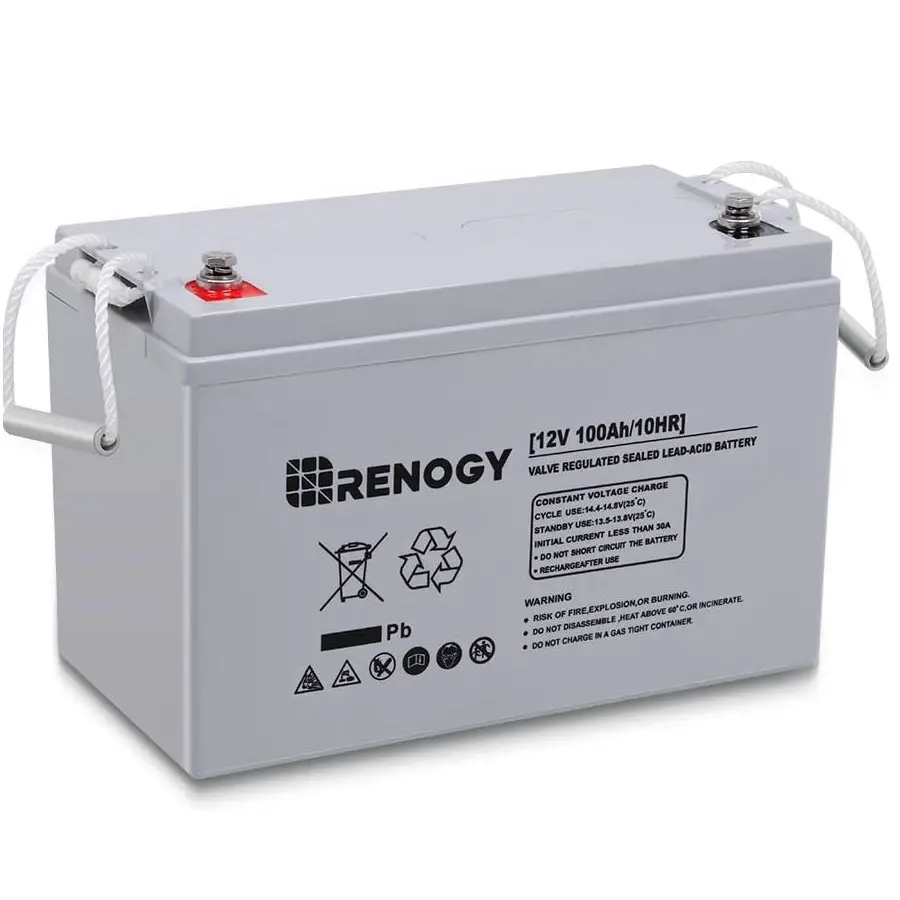
- Brand Renogy
- Voltage 12 Volts
- Item Weight 63.9 Pounds
Choose the Best RV Batterie
Customer’s Choice: the Best Rated RV Batteries
9 users answered this survey. Please help us improve this review!
An RV battery is a deep cycle lead-acid rechargeable battery that you would use in an RV or camper. These batteries are designed to withstand the frequent charge and discharge cycles associated with running appliances when camping, which means they’re perfect for power storage on your next adventure.
Benefits of RV batteries:
- They are perfect for powering your appliances;
- They are environment-friendly as they can be recycled;
- Their deep-cycle design makes them great for frequent use. They can endure long periods of inactivity and still hold a charge when you need it most, like on the road or during winter storage;
- They are very affordable for most budgets and can be purchased at almost any local battery shop or online;
- RV batteries provide high power without putting a lot of pressure on your vehicle’s electrical system, taking the burden off from other components that may need help powering appliances like microwaves, refrigerators, pumps, and more. This allows you to save money by protecting those expensive electronic appliances from damage due to overworking them with low-quality RV batteries or too many devices plugged in simultaneously;
- The lifespan of an average RV battery is generally between 3 and 6 years depending on how often it needs recharging after each use (deep cycle design), which means they will likely outlast your current RV as well half a dozen others before needing replacement;
- You don’t have to worry about running out of power on the road or in a remote location because you can always recharge them with your vehicle’s alternator, solar panels, generator, shore power connection (if available), or another RV battery charger;
Do you own a recreational vehicle, such as a camper trailer or boat? If so, then it’s important to make sure you have the best RV batteries. It is easy to get lost in all of the different brands and styles out there, but this article will help guide your decision by giving you 5 of the best choices available. That way, no matter what kind of camper trailer or boat you have, experts will figure out which RV battery is perfect for your needs!
Table of Contents
Yuasa YUAM320BS YTX20L-BS Battery – the Editor’s choice!
 The Yuasa YUAM320BS Battery is a maintenance-free battery that has a totally sealed and spill-proof construction with all acid contained in special plates and absorbed glass mat separators. The battery will come dry with an acid bottle to be filled at any time for easy installation.
The Yuasa YUAM320BS Battery is a maintenance-free battery that has a totally sealed and spill-proof construction with all acid contained in special plates and absorbed glass mat separators. The battery will come dry with an acid bottle to be filled at any time for easy installation.
This high-quality battery is totally sealed, so you can be assured it will serve you well for years to come. With its advanced lead-calcium technology, the Yuasa YUAM320BS YTX20L-BS Battery holds its specific gravity more than 3 times longer than conventional batteries. All acid required for starting and maintaining the battery is absorbed in special plates or absorbed glass mat separators, making this system maintenance-free!
The Yuasa YTX20L-BS Battery is a perfect option for those looking for a 12 Volt, 18 amp-hour, and up to 270 cold-cranking amps. It’s reliable and dependable with easy maintenance – no need ever to add water!
Optima OPT8016-103 Deep Cycle Marine Battery – the best for starting power!
 The Optima OPT8016-103 Marine Battery provides unbeatable performance and reliability for constantly starting your vehicle or powering up your RV.
The Optima OPT8016-103 Marine Battery provides unbeatable performance and reliability for constantly starting your vehicle or powering up your RV.
And with a 15:1 reserve capacity and 870 amperes worth of cranking power, you can rest assured that this rugged engineering will stand tall in difficult conditions like temperatures as low as 0°C.
The Optima OPT8016-103 is a tough, dependable batter that’s been designed to withstand anything the weather can throw at it.
ODYSSEY PC680 Battery – the best for cycle life!
 ODYSSEY provides the best battery when it comes to life expectancy and durability. These batteries last up to 10x longer than your average rechargeable battery, giving you more bang for your buck with a 70% greater cycle life.
ODYSSEY provides the best battery when it comes to life expectancy and durability. These batteries last up to 10x longer than your average rechargeable battery, giving you more bang for your buck with a 70% greater cycle life.
With a high recharging efficiency, the batteries take 4-6 hours to refuel and are completely spill-resistant. Our versatile nature will make switching from conventional deep-cycle AGM deeply off easy with mounting options in doorways or under seats
The Odyssey PC680 Battery is a great durable choice that’s long-lasting and dependable. With its high recharge efficiency, it will resist normal wear and tear to last 170 CCA for years.
The ODYSSEY PC680 Battery is a portable, 170 CCA with an improved full 2-year limited warranty compared to other manufacturers. It also has a longer service life of 3-10 years and a faster recharge time of 4 – 6 hours. With mounting flexibility from the non-spill battery, this product will save you time, money, and aggravation when in use.
CHROMEBATTERY YT12B-BS Powersport Battery – the best for versatile fit!
 No more spending all that time to install your battery with this easy-to-install YTX12B-BS Powersport Battery by Chrome Battery. Delivered fully charged, it’s also packed with safety features so you can relax and enjoy the ride. Just connect the battery to the application and you’re ready to go!
No more spending all that time to install your battery with this easy-to-install YTX12B-BS Powersport Battery by Chrome Battery. Delivered fully charged, it’s also packed with safety features so you can relax and enjoy the ride. Just connect the battery to the application and you’re ready to go!
Designed for use in a variety of applications, ranging from motorcycles, ATVs, jet skis, snowmobiles, and the more-your vehicles will be back on the road again in no time when you choose this durable bike battery. Easy installation means cutting down on prep time too – just mount it up!
These batteries are constructed with the latest technology to give you a long-lasting and easily ready-to-go battery. They offer Acid construction, patented sealed posts, and fully charged batteries so all you need to do is hook it up and get on your way.
Renogy 12 Volt 100Ah Deep Cycle AGM Battery – the best for easy maintenance!
 This Renogy battery is ready to rock! It can reliably power a refrigerator, a laptop, and an LED light bulb for 12.5 hours without charging at the same time. But if you need power full blast, it can supply 10 times its capacity of 100 amps! You have the security of being prepared thanks to our specialized chemistry that provides this maintenance-free battery.
This Renogy battery is ready to rock! It can reliably power a refrigerator, a laptop, and an LED light bulb for 12.5 hours without charging at the same time. But if you need power full blast, it can supply 10 times its capacity of 100 amps! You have the security of being prepared thanks to our specialized chemistry that provides this maintenance-free battery.
Made with thick, absorbent glass mat (AGM) separators to protect against shock and vibration it provides you with a high discharge current.
The Renogy 12 Volt 100Ah Deep Cycle AGM Battery is an environmentally sound way to provide power. This long-lasting battery provides wide operation ranges, including temperatures below 32F. The emerald green electrolyte comes with extended shelf life and does not require maintenance or have the same mercury risk as other lead-acid batteries.
The Buyer’s Guide
Types of RV Batteries:
1) Conventional Flooded Electrolyte
There are several different types of RV batteries available on the market. The conventional flooded electrolyte is one of them, which features a liquid tank to hold the sulfuric acid solution that forms hydrogen gas when it discharges and oxygen during charging. It’s an open-cell design with removable caps allowing you to add distilled water or check fluid levels manually. This type requires regular maintenance but can last for up to 5 years under proper conditions.
The battery has good starting power and is often used in RVs because it can be mounted almost anywhere inside your vehicle without any risk of spillage damage due to its leak-proof construction. However, this lead-acid technology limits recharging options since most converters tend not to work well with conventional models.
Flooded wet cell batteries are the most common and least expensive type of deep cycle batteries but they require regular maintenance by adding distilled water as needed to prevent sulfation on the plates that can significantly reduce battery life if left untreated. They also contain a liquid acid electrolyte so there is no worry about gassing or explosion due to overcharging like AGM and gel cells that use recombination technology.
This makes flooded wet cell batteries better for those who don’t want any extra care when it comes to their RV battery system, such as weekend warriors that only go out once or twice a month (you’ll know who you are).
2) Gel Batteries
Although gel batteries are proven to be stable, they tend to have a shorter lifespan than other battery types. A key benefit of using this type is that they can be operated at any angle without being damaged or shorting out the system.
Gel batteries are most suitable for applications with deep cycling or infrequent use, such as solar installations and caravans. In general, gel batteries have a lifespan of about three to four years. They also cost more than other types of RV batteries.
The trade-off with gel cells is that you’ll pay more than double what you would spend for an AGM (another form of recombinant technology) but it’s worth every penny if not having to mess around with distilled water refills sounds like too much work since these will outlast standard lead-acid batteries by years longer!
3) Lithium Batteries
With lithium-ion technology evolving rapidly, these batteries have become the top choice in most RV Applications thanks to their high power output & capacity along with reliability over time. They do not contain gas which makes them a very safe solution even if they are used onboard an enclosed space like your camper van!
Lithium-ion batteries come in different shapes and sizes but you will usually find small ones designed to fit into tight spaces – perfect for RVs! If you need more than just one battery, you should go for a lithium-ion battery bank which can easily be wired together to reach your voltage requirements.
4) Lead Acid Batteries
Lead-acid batteries are the most common type of RV batteries, also sometimes referred as “flooded” or “wet cells” since they contain liquid electrolyte that needs regular attention and maintenance.
They are proven reliable but tend to have a shorter lifespan than other types due to their internal structure – lead plates inside steel cases! Lead acids are also the most affordable option but you’ll need a set of at least four in order to produce enough power for your camper van.
5) AGM Batteries
Absorbed Glass Mat batteries are the most common type in high-end RVs and they can also be found in hybrid vehicles. They tend to be more expensive than other types but offer superior performance especially for heavy-duty applications like caravans, camper vans, or boats.
As with gel batteries, AGMs do not contain any liquid electrolyte that makes them safe even if used onboard an enclosed space. Also known as “starved electrolyte” cells because of their tight internal structure, these batteries work perfectly under extreme conditions including heat & cold since they don’t require regular maintenance – making them a great choice for your RV!
The one drawback is increased cost vs. standard wet cell batteries so if it’s your first boat or camper conversion you may want to consider going with something cheaper until you’ve got some experience under your belt since AGMs will need to be replaced about once every three years.
6) 6-volt RV Battery
A perfect choice for small RVs, typically solar setups. These batteries are meant to be used in pairs or even fours since they produce lower voltage than 12-volt RV batteries – which means you’ll need more of them! The typical lifespan is around 3-4 years, but it’s something you should consider before purchasing. Also, keep in mind that they can be difficult and expensive to find due to their low demand compared with 12-volt batteries!
7) 12-volt RV Battery
The most versatile battery type, also suitable for heavy-duty applications like caravans & boats. A set of two 12V deep cycle batteries will provide enough power output for your camper van but keep in mind that not all manufacturers recommend connecting their products together so make sure to read the manual before doing any wiring!
If you want to go with just one big battery instead of a bank then an AGM is usually recommended due to its superior performance over other types of RV batteries.
Main Features:
Battery Materials:
- Lead Acid Batteries. These are the oldest type of battery around, yet they remain to be used in most small electric devices. They haven’t changed much over time and their main advantage is that they are relatively cheap. Even though lead-acid batteries work well with low levels of use, if heavily used or stored without charging for an extended period, they tend to lose power quickly compared to other types of batteries;
- Gel/Gel Hybrid Batteries. Sometimes referred to as “sealed heavy-duty” because these batteries don’t require any water topping off like regular flooded deep cycle batteries but offer similar capacities at a higher price tag than conventional lead-acid models. The benefit here is that you can mount them in virtually any position without worrying about leaking;
- Absorbed Glass Mat (AGM) Batteries. AGMs are one of the most common types used today, providing an excellent alternative to flooded batteries because they’re sealed and maintained free so there’s no need for water refills or vent holes. They also offer a much higher cycle life than standard lead-acid deep cycle models but come at a slightly higher price tag;
- Lithium Iron Phosphate (LiFePO₄). The latest type of battery has taken RVers by storm due to their lightweight design and high energy density that means it can provide more power in less space. However, LiFePo₄ batteries are more expensive than traditional batteries, but they also have a longer lifespan and require less maintenance;
- Other types. There are other types of batteries that don’t fit into the above categories such as Lithium-Ion (Li-Ion), Nickel Iron (NiFe or Nicads), or Zinc Air/Iron Sulfur (Zn/Air), to name just a few. These models use different chemistries for their operation so it’s important to consider additional factors like power capacity, cost efficiency, and battery life expectancy when weighing your options out;
Battery Size and Power
Battery size is determined by the total power available from all of the batteries combined. A bigger battery pack will have a longer run time and more cranking amps than a smaller one. Keep in mind that if you add an additional bank, it should be wired to parallel with your existing bank because this allows both banks to remain independent while still being connected for charging.
If you are going on long trips or need maximum capacity (such as dry camping), choose larger units such as Group 27s or 31s rather than standard 12v car/marine type batteries like Group 24s and 26s which tend to drop off somewhat quickly when used beyond their normal range.
For RVs with shoreline connections, select high-quality deep cycle batteries that can power your appliances, lights, and other equipment when you are not plugged in.
It is a good idea to have at least two different battery types for an RV because one may be able to handle heavy loads while the other cannot.
If there is only enough room in the engine compartment or under a seat for one Group 27 deep cycle AGM battery, it should ideally be used as a cranking battery rather than powering house loads such as interior lighting, etc.
Power
When you are hooking up your RV to a campsite outlet or generator, you need reliable electricity. The most important feature of an ideal battery is its ability to store energy and provide it as needed for whatever load voltage requirement is required by your equipment.
One of the most common requirements in RVs – especially those using inverters – is 120 volts AC current at 60 Hz with pure sine wave output (i.e., high quality). Inverter-based systems also require batteries capable of accepting full charging amps without damage from overcharging.
Quality batteries must be able to maintain long life even under less than perfect conditions such as repeated deep discharges. And they must be able to do all this without much maintenance, which is critical if you are using your RV throughout the year or in areas where access to a service depot isn’t easy.
The best batteries for RVs provide long life at high ambient temperatures and low state of charge (SOC). They can withstand frequent cycling between shallow depth-of-discharge (DOD) and full discharge with little impact on performance over time.
Batteries need more support than most people realize – especially expensive AGM batteries – because even the best don’t last forever. Eventually, every battery will require replacement. This means that not only does your equipment rely on quality power but it also needs reliable charging since many systems cannot operate without it.
Understanding the different charging requirements of your equipment is critical to ensuring that you can use your power system reliably and efficiently over time.
Pricing
In general, you can expect to pay anywhere from $50-$400 for an RV battery. In most cases, the higher-cost batteries are going to have a longer lifespan and perform better overall. If this is what you’re looking for in your next purchase, it might be worth spending a little extra money upfront so you don’t have to worry about replacing your battery every year or two.
However, if budget is more important than quality in the short term (as long as performance stays consistent), there are options that will work just fine without breaking the bank.
Top Brands:
- Trojan;
- Lifeline;
- Interstate;
- Deka/East Penn;
- Yuasa;
- Optima;
- ODYSSEY;
RV Batteries for Cold Weather vs Hot Weather
When it comes to cold weather or hot weather, a few things that batteries should be able to handle. In the wintertime, battery fluid can freeze and cause permanent damage if not handled correctly.
During warmer months, batteries have higher power demands from appliances such as air conditioners being used more frequently during the summer months. For this reason, quality deep cycle RV batteries should offer a high amp-hour range for extended periods so they work best in both climates.
Cold weather RV batteries should be able to provide a large range of power, which is why deep cycle products are ideal.
Hot weather RV batteries need high CCA (Cold Cranking Amps) and CA (Cranking Amps) because these appliances run on higher energy demands during warmer months.
RV Batteries for Dry Camping vs Normal Camping
Dry campers need more power than those who use hookups at RV parks and campsites because they do not have access to an electrical source as people with shore power do.
On the other hand, regular camper battery life is shortened by heat during warmer months which causes their batteries’ fluid levels to evaporate faster since the coolant is lost through high temperatures caused by charging systems on RVs:
- Dry Camping RV Batteries require maintenance-free models due to little activity and close monitoring;
- Normal Camping RV Batteries need high CCA (Cold Cranking Amps) and CA (Cranking Amps);
Solar Charged RV Batteries vs Normal Batteries
Solar charging systems on RVs provide power for 12-volt accessories when the motorhome is parked but not plugged in. These rechargeable units need high CCA (Cold Cranking Amps) and CA (Cranking Amps):
- Solar Charged RV Batteries require maintenance-free models due to little activity while they’re being recharged during sunny days without hookups;
- Normal Camping RV Batteries should always have deep cycle capabilities because of appliances like air conditioners which run more frequently during warmer months;
How to use an RV battery:
RV batteries are rechargeable and can offer excellent service for years. They will be the source of energy that starts your engine, lights up all appliances in your RV, charges you electronic devices while camping, and more!
There is no need to buy a new battery every season – therefore, it’s important to care about them properly (just like with any other piece of equipment).
A few useful tips on how best to maintain their performance:
- Make sure they don’t get too low or too hot. Don’t let them run out completely before recharging since this may damage the plates inside. Always use high-quality chargers such as solar ones if possible. The temperature has an effect on batteries just like it does on people, so try to keep them in moderate conditions (40-80 degrees Fahrenheit);
- For wet cell batteries, always use distilled water. If your battery is sealed and maintained free then you don’t have to check the level of water inside. However, if it needs topping up occasionally or often because of high heat, dust, etc., make sure that only distilled water is used. Tap water has impurities such as calcium and chlorine which can damage the plates inside a lead-acid battery;
RV Batteries Comparison
The table below provides a comparison of various indicators for RV batteries. These indicators are crucial in determining the performance and suitability of batteries for recreational vehicles.
| Indicator | Deep Cycle Battery | Starting Battery | Lithium-ion Battery |
|---|---|---|---|
| Capacity (Ah) | 100-400 | 50-100 | 100-300 |
| Cycle Life | 200-1000+ | 100-200 | 2000-5000+ |
| Weight (lbs) | 50-150 | 30-60 | 30-50 |
| Charging Efficiency (%) | 80-90 | 95-100 | 99 |
| Self-Discharge Rate (%) | 1-3 | 10-15 | 1-3 |
| Price Range ($) | 200-800 | 50-150 | 600-2000+ |
The table provides a comparison of three types of RV batteries: deep cycle batteries, starting batteries, and lithium-ion batteries. Each battery type has different characteristics and performance attributes.
Capacity (Ah) refers to the battery’s energy storage capacity, measured in ampere-hours. Deep cycle batteries typically offer higher capacities, ranging from 100 to 400 Ah, providing more extended power supply for RV appliances. Starting batteries have lower capacities, usually ranging from 50 to 100 Ah, designed primarily for engine starting. Lithium-ion batteries offer similar capacities to deep cycle batteries, ranging from 100 to 300 Ah, but with the advantage of higher efficiency and lighter weight.
Cycle life indicates the number of complete charge-discharge cycles a battery can endure before its capacity significantly decreases. Deep cycle batteries have a cycle life of 200 to 1000+ cycles, making them suitable for frequent deep discharges and recharges. Starting batteries typically offer 100 to 200 cycles. Lithium-ion batteries excel in this aspect, providing a cycle life of 2000 to 5000+ cycles, ensuring long-term durability and reliability.
Weight is an important factor for RV batteries, as lighter batteries can help reduce the overall weight of the vehicle. Deep cycle batteries range from 50 to 150 lbs, while starting batteries are lighter, weighing between 30 and 60 lbs. Lithium-ion batteries are the lightest, weighing only 30 to 50 lbs, making them ideal for RVs where weight is a concern.
Charging efficiency represents the effectiveness of the battery in accepting and storing electrical energy. Deep cycle batteries typically have charging efficiencies of 80 to 90%, while starting batteries boast higher efficiency rates of 95 to 100%. Lithium-ion batteries are even more efficient, with a charging efficiency of 99%, allowing faster charging and more efficient energy usage.
Self-discharge rate indicates the percentage of charge a battery loses over time when not in use. Deep cycle and lithium-ion batteries both have low self-discharge rates of 1 to 3%, ensuring they retain their charge for more extended periods. Starting batteries have higher self-discharge rates, typically around 10 to 15%.
Price range reflects the cost of the batteries. Deep cycle batteries are generally priced between $200 and $800, providing a cost-effective option for RV owners. Starting batteries are more affordable, ranging from $50 to $150. Lithium-ion batteries are the most expensive, with prices ranging from $600 to $2000 or more, but they offer superior performance and longevity.
Consider these indicators when selecting an RV battery based on your specific power requirements, budget, and other preferences.
FAQ
What are the most important factors in choosing a battery?
While there are many technical aspects to consider when picking out an RV battery, 3 major components stand out and often decide which one you should get:
- how deep it can discharge;
- its power reserve;
- whether it is maintenance-free;
The first factor determines how long your system will work during blackouts without needing any additional features like inverters or generators while also protecting against overcharging which would otherwise damage both batteries and appliances quite quickly.
As for the second, this tells you about the total energy reserves that make up each individual cell of these types of batteries so that their quality doesn’t suffer from lower efficiency due to voltage drops over time as you use them.
Finally, the third one is about choosing a maintenance-free variant if you don’t want to be replacing your RV battery every few months or years due to its poor performance and low lifespan after being exposed to too much heat.
What is a deep cycle battery?
A deep-cycle battery can be used for many applications, but it should generally not be discharged below 20% of the capacity. The RV uses this type of battery as they are designed to release energy over time and then recharge again without being damaged by discharging too deeply.
In comparison, starting batteries have less total power reserves but provide them instantly which allows you to start up to larger engines such as those found in cars or trucks even if their electrical systems aren’t fully charged yet.
This also makes them easier to use with things like portable generators that don’t give out enough current for using standard lead-acid batteries easily. With so much difference between these two types of batteries, it’s important that you know which one you need.
What is the best battery for an RV?
Most RV batteries are deep-cycle lead-acid batteries designed to provide power over a long period, unlike automotive or starting batteries that have short run times and high cranking amps. The ideal RV battery will be able to deliver ample current when it’s called upon while keeping a steady voltage as its state of charge changes.
This means that you should look at amp-hours, not just volts when choosing your new RV battery. A good guideline for sizing an RV battery is to figure out the total current draw of your appliances and add about 100-125% extra.
If you’re looking for the best battery that will give your RV a long and healthy life then an Absorbed Glass Mat (AGM) deep cycle battery is what experts would recommend. They are more expensive than standard flooded wet cells but they can be mounted in any position without spilling or gassing, hold their charge much longer when not used regularly, and don’t need to be watered so no acid spills to clean up if you know what experts mean!
What is the RV “battery bank”?
The “battery bank” consists of one or more batteries wired together in order to supply power from your automotive alternator when needed. They run all lights, appliances, and other accessories while the engine is turned off – which means not having to drain your vehicle starting system each night like traditional car batteries. They provide power for all your needs while you are dry camping, and they recharge when the vehicle is running so that you never have to worry about docking and charging unless it’s absolutely necessary.
The average battery bank in an RV consists of two or three 12-volt deep-cycle lead-acid batteries wired together in series (positive terminal from one battery to negative terminal of another). You can then wire them into a 24-volt system by crossing over positive wires – but only do this if you know what you’re doing because wiring incorrectly can cause dangerous electrical problems.
If anything goes wrong with your connections, simply disconnect the wires until everything is working properly again – there should be no risk involved as long as proper precautions are taken.
The battery bank is often located in a compartment underneath the RV and wired into your electrical system. On some models, you can find them outside, but they should never be exposed to extremely high or low temperatures – which means that even if yours are installed under the coach there’s still a possibility of corrosion since this location doesn’t provide as much protection from heat as an enclosed space would. If you have any questions about where exactly to locate yours, consult with your dealer for more information because every model has its own specific guidelines for proper installation.
How long should RV batteries last?
RV batteries have a wide range of expected lifespans. Some can last for up to 5 years, while others will only provide two or three seasons before failing. It is almost impossible to say whether your battery should be replaced based on age alone; instead, look at the performance indicators and you’ll know when it’s time for an upgrade.
What is the most long-lasting RV battery?
The Optima Blue Top Batteries can be the ideal RV lead-acid battery. They have a capacity of 55 Ah (27.5 Ah usable) but are expected to endure for around 400 cycles. They come with a fantastic (for lead-acid) guarantee of 24 months.
Are deep cycle batteries good for RVs?
Deep cycle batteries are a good choice for RVs when they need to power appliances and accessories that require high operating currents. In general, deep cycle batteries can last longer than a regular car or marine one because of their design. They also have the best performance at lower temperatures that is an important feature in colder climates where we spend more time camping during winter months.
Are gel batteries good for RVs?
Gel batteries are good for RVs. They provide the best power and efficiency when it comes to extended periods of use (like RVing). Most people who own an RV want a quality battery that will last them for years, which is what you get with gel cells. There are no dangerous risks from using gel cells. They have been used in the automotive industry since about 1908, so they’ve stood the test of time and proven themselves as reliable sources of power. This means that you won’t need to worry about your RV getting stranded somewhere if it dies on you!
Do I need two batteries for my RV?
No. A single battery is enough for most RVs, even when you want to plug in the electric appliances while driving. A second one will definitely help with heavier loads or more energy-intensive activities like microwaving or running a coffee maker.
Having a second battery is not only useful in some situations, but it can also help with your safety. You will be able to move even if one of the batteries fails. And you won’t risk getting stuck somewhere without power when using an inverter while driving on long trips!
Do I need a battery if my RV is plugged in?
A battery is still needed, even if your RV is plugged in. A generator or inverter may be used to supplement the main power source. The battery will provide extra energy from the start, and maintain it during the use of these devices. If you don’t have a battery, the generator or inverter will drain your RV’s main power source. Since this is not an ideal situation and can cause problems with your appliances while camping, it is best to get a dedicated deep cycle battery for use in these situations.
Do RV batteries charge when plugged into shore power?
No, RV batteries are not charged by shore power. In normal house power, an inverter is used to convert DC current from the batteries into AC current that you would use in your home. In a motorhome or camper, this process has been simplified and instead of using an inverter, there are specific appliances such as a microwave, TV’s, etc. that have their own built-in inverters so they can run directly off 12-volt power which comes from the battery bank.
Does the RV battery charge while driving?
The RV battery does not charge while driving, but it can be charged by running the engine or using an accessory such as a generator.
Why Is My RV battery draining so fast?
It can be frustrating when you plug your RV into the campsite electric hookup only to find that after a few hours it seems like your battery is dead. This is because the electric hookup at most campsites provides power to your RV through an inverter, which means that it changes the direct current electricity from your battery into alternating current for use in appliances and other electrical items. This process can be draining on a battery if you are using more than just lights or maybe even running an air conditioner!
The best way to avoid this problem would be to carry around a portable generator with you when traveling somewhere without easy access to electric outlets. However, there are some things that you can do while still plugged in (especially during sleep hours) like turning off any unnecessary electronics (this includes TVs), reducing refrigerator temperatures by covering up ice trays, or moving them elsewhere inside the fridge & charging batteries overnight.
How do you maintain RV batteries?
When you buy new RV batteries it’s important to know how to properly maintain them. The manufacturer will give specific instructions on the best way to do this, but generally, it involves:
- checking fluid levels in each cell and replacing when needed;
- charging regularly (at least once a month);
- and using distilled water instead of tap water;
You should also wipe off any dirt or corrosion from terminals with a wet rag wrapped around your finger. If they need cleaning, use baking soda dissolved in hot vinegar, mixed into a paste with enough water for easy application then wait until dry before filling up cells again with a clean electrolyte solution such as deionized or distilled water only!
How do I determine the right battery size for my RV?
The right battery size for your RV depends on factors such as the power demands of your appliances and the duration of your trips. Calculate your power needs by totaling the energy consumption of all your RV appliances and devices, then choose a battery with sufficient capacity to meet those needs.
What is the difference between a flooded battery and an AGM battery?
Flooded batteries contain liquid electrolyte, while AGM (Absorbent Glass Mat) batteries use a fiberglass mat soaked in electrolyte. AGM batteries are generally maintenance-free, offer faster charging, and are more resistant to shock and vibration compared to flooded batteries.
Can I use a regular car battery for my RV?
Using a regular car battery for your RV is not recommended. Car batteries are designed for starting engines and are not suitable for deep cycling, which is required for RV use. It’s best to use a deep cycle battery specifically designed for RV applications.
How should I store my RV batteries during the winter?
To store your RV batteries during winter, they should be fully charged. Disconnect the negative terminal to prevent any parasitic loads. Store the batteries in a cool, dry location away from direct sunlight. It’s also advisable to periodically recharge them during long storage periods.
Can I charge my RV batteries with solar panels?
Yes, you can charge your RV batteries with solar panels. Solar panels convert sunlight into electricity, which can be used to charge your batteries. Install a solar charging system with an appropriate charge controller to regulate the charging process and ensure optimal battery health.
Can I replace my lead-acid batteries with lithium-ion batteries?
Yes, it is possible to replace lead-acid batteries with lithium-ion batteries in your RV. Lithium-ion batteries offer advantages such as higher energy density, longer lifespan, lighter weight, and faster charging. However, they are more expensive upfront and require a compatible charging system.
How often should I check the water level in my RV batteries?
If you have flooded lead-acid batteries, you should check the water level regularly, ideally every 2-4 weeks. Add distilled water to the cells if the levels are low. AGM and lithium-ion batteries are sealed and do not require water maintenance.
Can I run my RV air conditioner on battery power?
Running an RV air conditioner on battery power alone is not feasible. Air conditioners draw a significant amount of power, and the battery capacity required to run them for an extended period would be impractical. Typically, air conditioners in RVs require a generator or shore power connection.
What is the average lifespan of an RV battery?
The average lifespan of an RV battery can vary depending on usage, maintenance, and battery type. On average, a well-maintained deep cycle battery can last 3-7 years, while lithium-ion batteries have a longer lifespan of 8-15 years. Regular maintenance and proper charging practices can help extend battery life.
Can I use a generator to charge my RV batteries?
Yes, you can use a generator to charge your RV batteries. Generators produce AC power, which can be used to recharge your batteries through the RV’s built-in converter or battery charger. Make sure to follow the manufacturer’s guidelines for connecting and charging your batteries with a generator.
Useful Video: Best RV Batteries | RV Expertise
Final thoughts
That concludes the list of 5 of the best RV batteries on the market today. Hopefully, this article has helped you find a battery that will work for your needs and budget! You deserve nothing but the best when it comes to your recreational vehicle or boat – especially if they’re important enough to warrant an investment like installing new batteries!


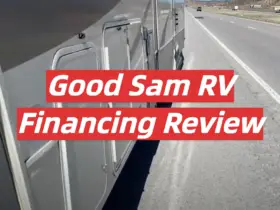
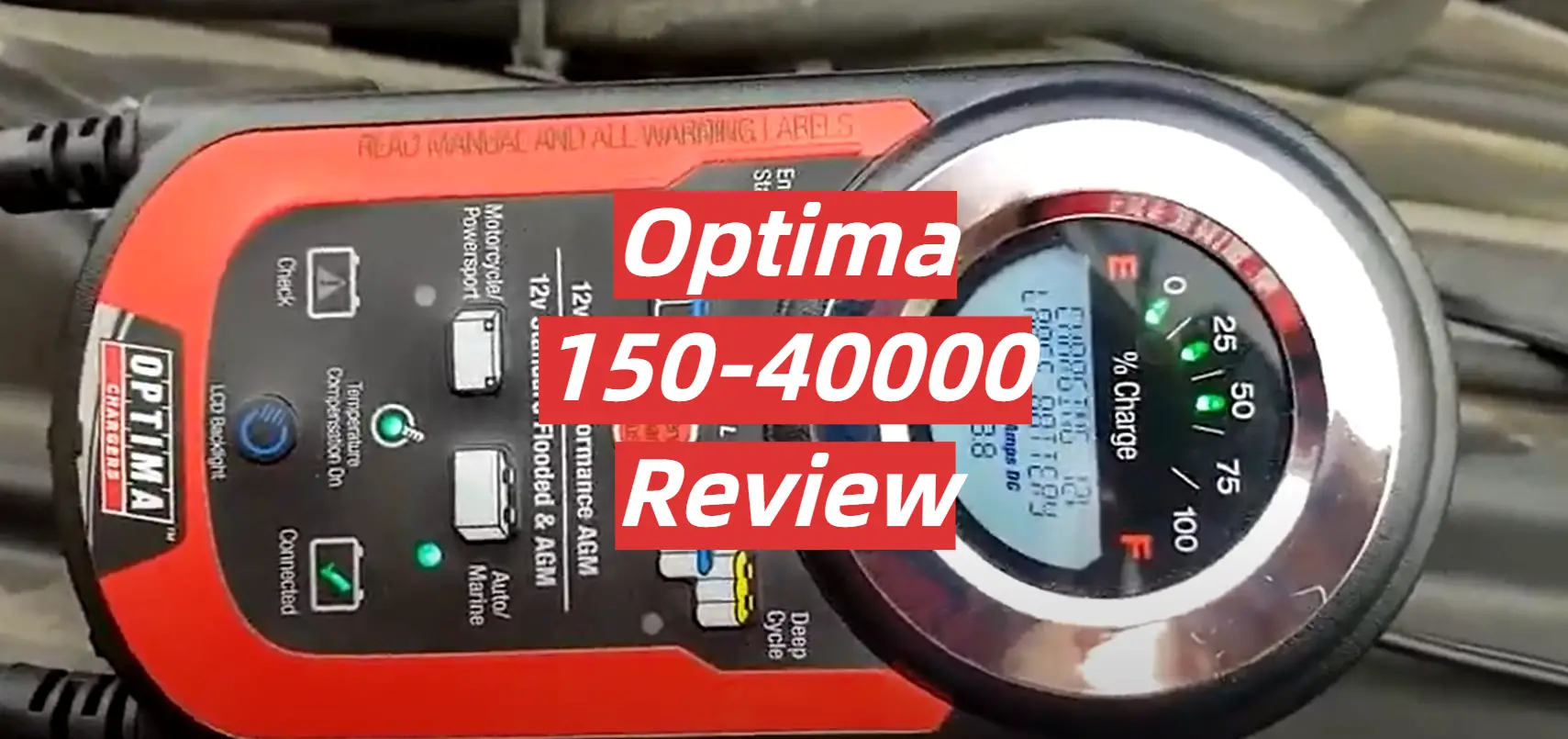
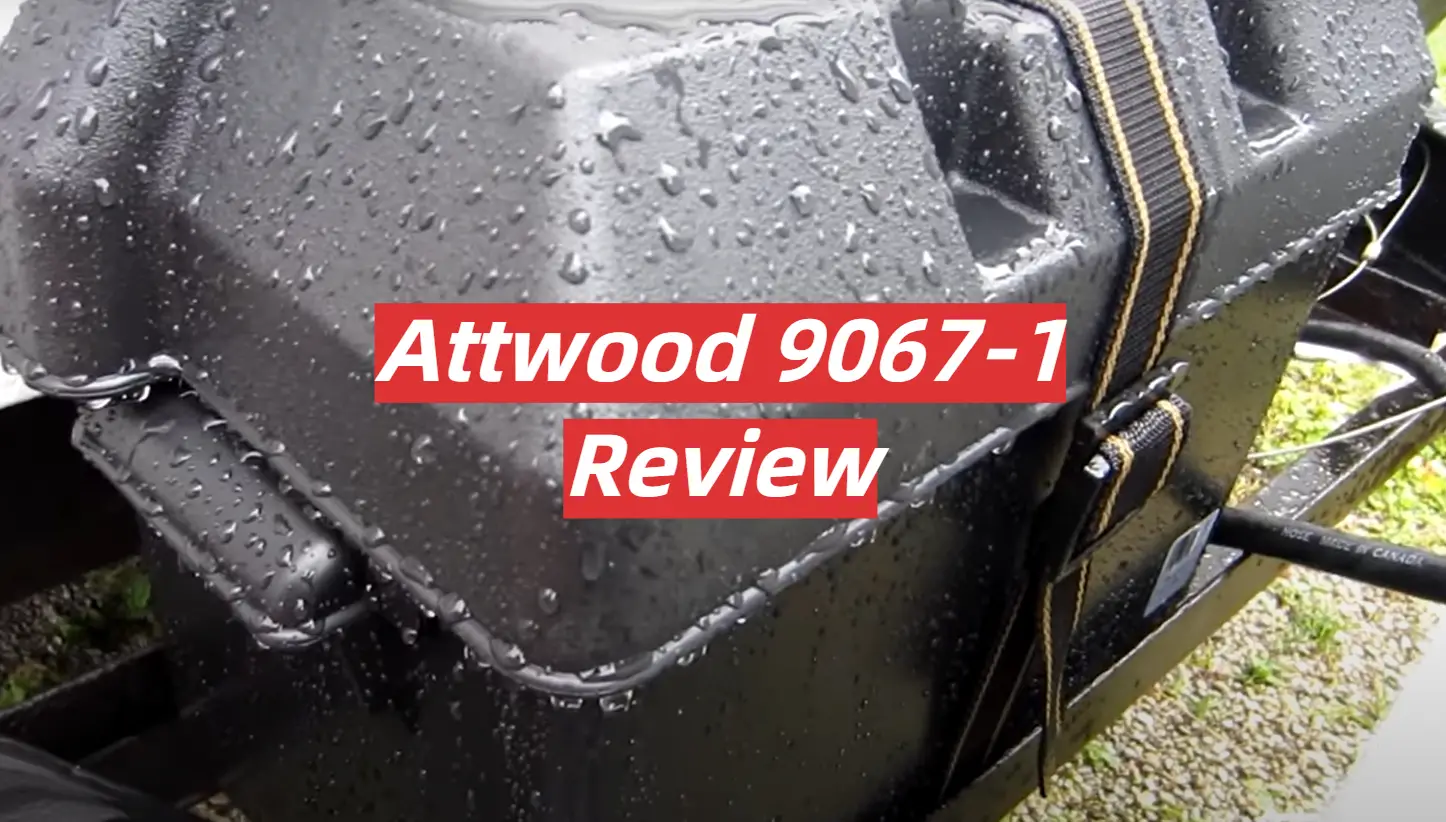

Leave a Reply